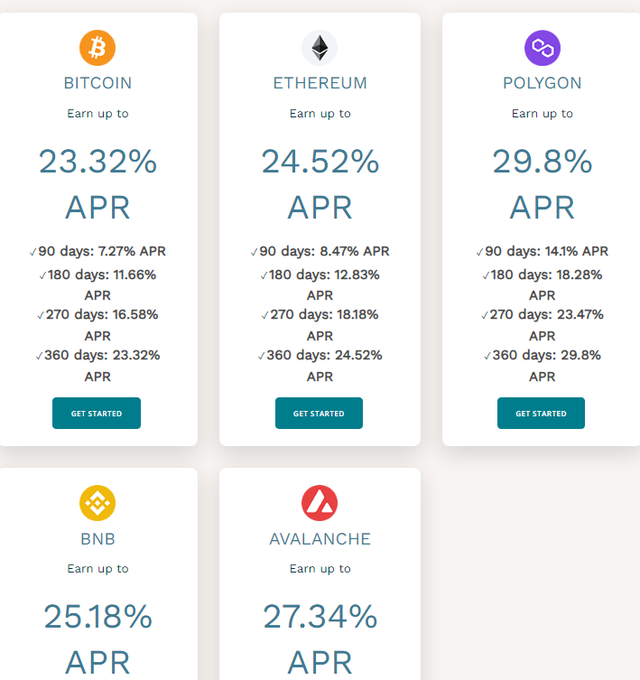How To Choose The Right Cryptocurrency Investment For Your Portfolio
Cryptocurrency is a digital or virtual form of currency that uses cryptography for security and operates independently of a central authority, such as a government or financial institution. It is based on a decentralized technology called blockchain, which is a distributed ledger that records all transactions across a network of computers.
The first and most well-known cryptocurrency is Bitcoin, which was introduced in 2009 by an anonymous person or group of people using the pseudonym Satoshi Nakamoto. Since then, numerous other cryptocurrencies, often referred to as altcoins, have been created, each with its own unique features and purposes.
Cryptocurrencies are created through a process called mining, which involves solving complex mathematical problems using powerful computers. This process verifies and adds new transactions to the blockchain, while also releasing new units of the cryptocurrency as a reward for the miners’ efforts.
One of the key features of cryptocurrencies is their decentralized nature. Unlike traditional fiat currencies, which are controlled and regulated by central banks and governments, cryptocurrencies operate on a peer-to-peer network without a central authority. This decentralization provides several advantages, including increased security, transparency, and resistance to censorship or manipulation.
Cryptocurrencies rely on cryptographic techniques to secure transactions and control the creation of new units. Cryptography ensures the integrity and confidentiality of the transactions, making it extremely difficult for hackers or unauthorized parties to tamper with the blockchain or steal funds. This cryptographic security is achieved through public-private key pairs, digital signatures, and cryptographic hashing algorithms.
Transactions in cryptocurrencies are typically pseudonymous, meaning that the identities of the individuals involved are not directly revealed. Instead, users are identified by their wallet addresses, which are alphanumeric strings generated by their cryptocurrency wallets. While wallet addresses are public and visible on the blockchain, the real-world identities behind those addresses are often difficult to trace without additional information.
Cryptocurrencies offer several advantages over traditional financial systems. They enable fast and low-cost cross-border transactions, eliminating the need for intermediaries such as banks or remittance services. Additionally, cryptocurrencies provide financial access to unbanked populations who may not have access to traditional banking services. They also offer a potential hedge against inflation and government control over traditional currencies.
However, cryptocurrencies are not without challenges. The volatility of cryptocurrency prices can make them risky for investors, and the lack of regulation in the industry has led to concerns about fraud, money laundering, and market manipulation. Additionally, the energy consumption associated with cryptocurrency mining has raised environmental concerns.
Despite these challenges, cryptocurrencies have gained significant attention and adoption in recent years. Major companies and institutions are exploring their potential applications, and some countries have started to develop regulatory frameworks to govern their use. The cryptocurrency ecosystem continues to evolve, with ongoing research and development to address scalability, privacy, and other technical challenges.
Why invest in cryptocurrency?
Investing in cryptocurrencies has gained popularity in recent years, and many people are drawn to the potential benefits and opportunities they offer. Here are several reasons why individuals consider investing in cryptocurrencies:
1. Potential for High Returns: Cryptocurrencies have the potential for substantial price appreciation over time. Bitcoin, for example, has experienced significant growth since its inception, and some altcoins have delivered even higher returns. This potential for high returns attracts investors seeking to generate substantial profits.
2. Diversification: Cryptocurrencies offer a unique opportunity to diversify investment portfolios. Traditional asset classes such as stocks, bonds, and real estate have their own market dynamics and correlations. Adding cryptocurrencies to a portfolio can help spread risk and potentially provide a hedge against traditional asset classes, as cryptocurrencies often have different price movements.
3. Increasing Adoption and Recognition: Cryptocurrencies are becoming more widely accepted and recognized as a legitimate asset class. Major companies, including Tesla, PayPal, and Square, have integrated cryptocurrencies into their platforms, and some institutional investors and hedge funds are allocating a portion of their portfolios to cryptocurrencies. This growing acceptance and adoption contribute to the legitimacy and long-term potential of cryptocurrencies as an investment.
4. Accessibility and Liquidity: Cryptocurrencies offer accessibility to a global market that operates 24/7. Investors can buy, sell, and trade cryptocurrencies on various online exchanges at any time. This accessibility provides liquidity and flexibility compared to traditional financial markets that have limited trading hours and may involve intermediaries.
5. Decentralization and Financial Freedom: Cryptocurrencies operate on decentralized networks, removing the need for intermediaries like banks. This decentralization empowers individuals by giving them more control over their finances and eliminating the reliance on traditional financial systems. For individuals in countries with limited access to banking services, cryptocurrencies can provide a means of participating in the global economy.
6. Technological Innovation: Blockchain technology, which underlies cryptocurrencies, is considered revolutionary and has the potential to disrupt various industries. By investing in cryptocurrencies, individuals can support and participate in the development of this innovative technology, which may have far-reaching implications in finance, supply chain management, healthcare, and other sectors.
It is important to note that investing in cryptocurrencies carries certain risks and challenges. The cryptocurrency market is highly volatile, and prices can fluctuate dramatically in short periods. Regulatory uncertainties, cybersecurity threats, and market manipulation are also concerns. Additionally, individuals should carefully consider their risk tolerance, conduct thorough research, and seek professional advice before investing in cryptocurrencies.
Overall, investing in cryptocurrencies can offer unique opportunities for potential high returns, diversification, and participation in a growing digital economy. However, it is crucial to approach cryptocurrency investments with caution and conduct thorough due diligence to make informed investment decisions.
Also read: How Cryptocurrencies Have Transformed The Digital Economy
How to choose the right cryptocurrency for your portfolio?
Choosing the right cryptocurrency for your portfolio requires careful consideration and research. Here are several key factors to consider when selecting a cryptocurrency:
1. Purpose and Use Case: Each cryptocurrency serves a different purpose and has a specific use case. Some cryptocurrencies, like Bitcoin, aim to be a decentralized digital currency for peer-to-peer transactions. Others focus on smart contracts (e.g., Ethereum) or privacy (e.g., Monero). Understand the underlying technology and the problem the cryptocurrency aims to solve. Assess whether the cryptocurrency’s purpose aligns with your investment goals and values.
2. Market Capitalization and Liquidity: Market capitalization indicates the size and overall value of a cryptocurrency. Cryptocurrencies with larger market caps generally have greater liquidity and stability. Consider investing in cryptocurrencies with a significant market capitalization, as they tend to be less prone to extreme price fluctuations and manipulation.
3. Development Team and Community: Assess the development team behind the cryptocurrency. Look for experienced and reputable individuals or organizations that have a track record of delivering on their promises. Additionally, consider the size and activity of the cryptocurrency’s community. A vibrant and engaged community can contribute to the growth and adoption of a cryptocurrency.
4. Technology and Innovation: Evaluate the underlying technology of the cryptocurrency. Consider factors such as scalability, security, speed, and energy efficiency. Research whether the cryptocurrency utilizes cutting-edge technologies or has plans for future upgrades and improvements. A strong technological foundation can contribute to the long-term viability and success of a cryptocurrency.
5. Regulatory Compliance and Adoption: Pay attention to the regulatory environment surrounding the cryptocurrency. Some jurisdictions have embraced cryptocurrencies and established clear regulatory frameworks, while others have imposed restrictions or bans. Cryptocurrencies with regulatory compliance and partnerships with established institutions tend to have higher chances of adoption and integration into mainstream financial systems.
6. Market Performance and Historical Data: Analyze the historical price performance of the cryptocurrency. Consider factors such as price volatility, market trends, and trading volume. Look for patterns and evaluate how the cryptocurrency has performed in different market conditions. However, keep in mind that past performance does not guarantee future results.
7. Risk and Reward Profile: Assess the risk and reward potential of the cryptocurrency. Higher-risk cryptocurrencies may offer the potential for significant returns but also carry a higher likelihood of volatility and potential losses. Consider your risk tolerance, investment horizon, and overall portfolio diversification strategy.
8. Independent Research and Due Diligence: Engage in thorough research and due diligence before making any investment decisions. Read whitepapers, study technical documentation, and analyze the cryptocurrency’s online presence, social media activity, and news coverage. Seek out reputable sources of information and consider consulting with financial professionals who have expertise in cryptocurrencies.
Your #crypto portfolio is incomplete without #BTC , #ETH , #FLOKI and ______
👇
— Sofia White (@nftsofiawhite) June 13, 2023
Risks and rewards of investing in cryptocurrency
Investing in cryptocurrency offers both risks and rewards. Here are some important factors to consider:
Risks:
1. Volatility: Cryptocurrencies are known for their high price volatility. Prices can fluctuate significantly in short periods, leading to substantial gains or losses. This volatility increases the risk of investment, as the value of a cryptocurrency can quickly decline.
2. Regulatory Uncertainty: The regulatory landscape surrounding cryptocurrencies is still evolving. Different countries have varying approaches to regulation, which can impact the legality, taxation, and overall acceptance of cryptocurrencies. Regulatory changes or crackdowns can have a significant impact on the value and market sentiment of cryptocurrencies.
3. Cybersecurity Threats: The decentralized nature of cryptocurrencies makes them susceptible to cybersecurity threats. Hacking incidents, exchange breaches, and theft of funds are not uncommon. Investors must exercise caution and choose reputable platforms with robust security measures to mitigate the risk of hacking and theft.
4. Market Manipulation: The cryptocurrency market is relatively unregulated, making it susceptible to market manipulation. Pump-and-dump schemes, insider trading, and price manipulation can distort the market and lead to significant losses for unsuspecting investors. Lack of transparency and liquidity in certain markets can exacerbate these risks.
5. Technology Risks: Cryptocurrencies rely on underlying technologies such as blockchain. While blockchain is considered secure, there are still technical risks associated with vulnerabilities, bugs, or even attacks on the network. Additionally, scalability and interoperability challenges can hinder the widespread adoption of certain cryptocurrencies.
Rewards:
1. Potential High Returns: Cryptocurrencies have shown the potential for significant returns. Early investors in cryptocurrencies like Bitcoin and Ethereum have experienced substantial gains. Some altcoins have also delivered impressive returns. The high volatility of the cryptocurrency market provides opportunities for profit if timed correctly.
2. Diversification: Cryptocurrencies offer diversification benefits to investment portfolios. Their performance is often independent of traditional asset classes like stocks or bonds. By adding cryptocurrencies to a portfolio, investors can potentially reduce overall portfolio risk and increase the chances of generating higher returns.
3. Accessibility and Global Market: Cryptocurrencies operate on a global scale, enabling investors to access markets 24/7. They provide a decentralized platform for global transactions, eliminating intermediaries and reducing costs associated with traditional financial systems. This accessibility can be particularly advantageous for individuals in regions with limited banking infrastructure.
4. Technological Innovation: Blockchain technology, which underpins cryptocurrencies, is considered a groundbreaking innovation. By investing in cryptocurrencies, investors can participate in the development and adoption of this transformative technology. The potential applications of blockchain extend beyond cryptocurrencies and have the potential to disrupt various industries.
5. Financial Inclusion: Cryptocurrencies can provide financial access to the unbanked population, allowing them to participate in the global economy. In regions with limited access to traditional banking services, cryptocurrencies can serve as an alternative means of storing value, making payments, and accessing financial services.
It’s important to note that investing in cryptocurrencies involves inherent risks, and the market is highly speculative. Before investing, individuals should thoroughly research and understand the risks involved. It is advisable to consult with financial professionals and diversify investments across different asset classes to mitigate risks and achieve a balanced portfolio.
How to research cryptocurrencies?
Researching cryptocurrencies is crucial before making any investment decisions. Here are some steps to help you effectively research cryptocurrencies:
1. Understand the Basics: Start by gaining a solid understanding of how cryptocurrencies work, including the underlying technology, such as blockchain, and the fundamentals of decentralized finance. Learn about key terms like wallets, private keys, public addresses, mining, and consensus mechanisms.
2. Identify Your Investment Goals: Clarify your investment objectives and risk tolerance. Determine whether you are seeking short-term gains, long-term investment, or a combination of both. Your goals will help guide your research and investment strategy.
3. Research Cryptocurrency Projects: Look for information on the specific cryptocurrency projects you are interested in. Visit their official websites and read their whitepapers, which provide detailed information about the project’s purpose, technology, team, and roadmap. Pay attention to their use case, unique selling points, and potential for adoption and scalability.
4. Evaluate the Team: Assess the team behind the cryptocurrency project. Research the backgrounds, qualifications, and experience of the core team members and advisors. Look for evidence of their expertise in relevant fields such as blockchain technology, cryptography, finance, and software development.
5. Community and Communication Channels: Engage with the cryptocurrency community. Follow official social media channels, join online forums, and participate in discussions. Monitor how the team interacts with the community, addresses concerns, and provides updates. Community engagement and a strong online presence can indicate a vibrant project.
6. Analyze Market Data: Study market data and price history of the cryptocurrency. Look at historical price charts, trading volumes, market capitalization, and price trends. Utilize reputable cryptocurrency data platforms and tools to gather and analyze data, such as CoinMarketCap, CoinGecko, and TradingView.
7. Stay Updated with News and Events: Follow cryptocurrency-related news outlets and stay informed about market developments, regulatory updates, partnerships, and technological advancements. News can significantly impact cryptocurrency prices and market sentiment. Consider setting up alerts for relevant keywords or subscribing to newsletters to receive timely updates.
8. Assess Competitors and Market Positioning: Analyze the competitive landscape of the cryptocurrency project. Identify other projects that aim to solve similar problems or offer comparable features. Compare their technology, team, partnerships, and market adoption. Understanding the project’s unique value proposition and competitive advantage is crucial in evaluating its potential for success.
9. Risk Analysis: Consider the risks associated with the cryptocurrency investment. Evaluate factors such as regulatory uncertainty, market volatility, cybersecurity threats, and technological challenges. Assess the project’s ability to address these risks and navigate potential obstacles.
10. Seek Expert Opinion and Professional Advice: Consult with experts in the cryptocurrency field, such as financial advisors, blockchain consultants, or cryptocurrency analysts. They can provide valuable insights, technical expertise, and help you assess the potential risks and rewards of specific investments.
Remember that researching cryptocurrencies is an ongoing process. Regularly monitor developments, updates, and news related to the projects you are interested in. Be critical and objective in your analysis, and consider a diversified approach to investing in cryptocurrencies to manage risk effectively.
Also read: Top Favourite Low-Risk Cryptocurrencies
How to diversify your cryptocurrency portfolio?
Diversifying your cryptocurrency portfolio is an important risk management strategy that can help reduce the impact of volatility and increase the potential for long-term returns. Here are some key steps to diversify your cryptocurrency portfolio effectively:
1. Allocate Across Different Cryptocurrencies: Instead of investing solely in one cryptocurrency, spread your investments across multiple cryptocurrencies. Look for cryptocurrencies with different use cases, technologies, and market capitalizations. This diversification helps mitigate the risk of investing in a single cryptocurrency and increases the chances of benefiting from different market trends.
2. Consider Various Market Segments: Within the cryptocurrency market, there are different segments or categories. For example, you may consider investing in cryptocurrencies focused on decentralized finance (DeFi), privacy coins, smart contract platforms, or stablecoins. Each segment has its own characteristics and potential for growth, providing an opportunity for diversification.
3. Assess Risk-Reward Profiles: Evaluate the risk-reward profiles of the cryptocurrencies you are considering. Some cryptocurrencies may offer higher potential returns but come with higher volatility and risks. Balancing high-risk investments with more stable and established cryptocurrencies can help manage risk and potentially increase overall portfolio stability.
4. Analyze Correlations: Assess the correlations between different cryptocurrencies. Correlation refers to the statistical relationship between the price movements of two or more assets. Ideally, you want to choose cryptocurrencies with lower correlations to reduce the likelihood of all your investments moving in the same direction at the same time. Diversifying across cryptocurrencies with low correlations can help cushion against market downturns.
5. Consider Market Cap and Liquidity: Take into account the market capitalization and liquidity of the cryptocurrencies you’re considering. Cryptocurrencies with larger market caps and higher liquidity are generally more stable and less prone to manipulation. They also offer greater ease of buying, selling, and trading, allowing for more flexibility in portfolio management.
6. Geographic Diversification: Consider diversifying your cryptocurrency investments across different geographic regions. Cryptocurrency regulations and market conditions can vary significantly from one country to another. Investing in cryptocurrencies from various regions can help reduce the impact of specific regulatory or regional risks.
7. Dollar-Cost Averaging (DCA) Strategy: Implement a dollar-cost averaging strategy to regularly invest a fixed amount of money into your cryptocurrency portfolio over time, regardless of price fluctuations. This approach reduces the impact of market timing and allows you to accumulate cryptocurrencies at different price points, potentially benefiting from both market dips and rallies.
8. Regularly Rebalance Your Portfolio: Periodically review and rebalance your cryptocurrency portfolio to maintain your desired diversification. As the cryptocurrency market evolves and the performance of different assets varies, some cryptocurrencies may become over- or under-represented in your portfolio. Rebalancing ensures that your portfolio aligns with your investment goals and risk tolerance.
9. Seek Professional Advice: Consider consulting with a financial advisor or cryptocurrency expert who has knowledge and experience in the crypto market. They can provide guidance tailored to your specific investment objectives, risk tolerance, and financial situation.
Remember that diversification does not guarantee profits or protect against losses, but it can help manage risk and increase the potential for long-term gains. It’s important to conduct thorough research, stay informed about market developments, and make informed decisions based on your investment goals and risk tolerance.
Also read: Top Six Cryptocurrencies Providing Passive Income In 2022
Future of cryptocurrency
The future of cryptocurrency holds significant potential for further growth and adoption, as well as ongoing challenges and uncertainties. Here are some key aspects to consider when discussing the future of cryptocurrency:
1. Mainstream Adoption: Cryptocurrencies have already made significant strides toward mainstream adoption. Major companies, including Tesla, PayPal, and Square, have integrated cryptocurrencies into their platforms, allowing users to buy, sell, and transact with digital assets. Additionally, some countries are exploring the development of central bank digital currencies (CBDCs) as a way to modernize their financial systems. As more businesses, institutions, and governments embrace cryptocurrencies, their usage and acceptance are likely to increase.
2. Regulatory Landscape: One of the critical factors shaping the future of cryptocurrencies is the regulatory environment. Governments worldwide are developing frameworks to regulate digital assets, addressing concerns such as money laundering, tax evasion, consumer protection, and market stability. Clearer regulations can bring greater clarity and confidence to the cryptocurrency market, encouraging institutional investors and traditional financial institutions to participate more actively.
3. Evolution of Blockchain Technology: The underlying technology behind cryptocurrencies, blockchain, continues to evolve and innovate. Scalability solutions, such as layer-two protocols and sharding, aim to address the scalability limitations of blockchains like Bitcoin and Ethereum. Other advancements, such as improved privacy features, interoperability, and energy efficiency, are also being explored. These developments can enhance the functionality, usability, and potential use cases of cryptocurrencies, attracting further interest and adoption.
4. Central Bank Digital Currencies (CBDCs): CBDCs are digital representations of fiat currencies issued and regulated by central banks. Many countries are actively researching and piloting CBDC projects. CBDCs aim to combine the benefits of cryptocurrencies, such as faster and more efficient transactions, with the stability and trust associated with traditional fiat currencies. The introduction of CBDCs may reshape the financial landscape, impacting the role of cryptocurrencies and the broader digital economy.
5. Decentralized Finance (DeFi): DeFi refers to a suite of financial applications built on blockchain networks, offering services such as lending, borrowing, trading, and yield farming without intermediaries. DeFi has experienced significant growth, with billions of dollars locked in various decentralized protocols. The expansion of DeFi presents opportunities for individuals to access financial services, bypass traditional gatekeepers, and earn returns on their assets. As DeFi matures and addresses scalability and regulatory challenges, it has the potential to disrupt traditional finance further.
6. Interoperability and Cross-Chain Solutions: Interoperability aims to enable seamless communication and transactions across different blockchain networks. As the number of blockchain platforms increases, interoperability becomes increasingly important for the efficient movement of assets and data. Projects like Polkadot, Cosmos, and Ripple’s Interledger Protocol are working on cross-chain solutions to bridge different blockchains, facilitating greater connectivity and facilitating the exchange of value between various ecosystems.
7. Environmental Concerns: The environmental impact of cryptocurrency mining, particularly in the case of proof-of-work (PoW) consensus mechanisms, has raised concerns about sustainability. In response, there is a growing shift toward more energy-efficient consensus mechanisms like proof-of-stake (PoS) and the exploration of greener mining practices. Sustainable solutions are crucial to address environmental challenges and maintain the long-term viability of cryptocurrencies.
8. Global Financial Inclusion: Cryptocurrencies have the potential to enhance financial inclusion by providing access to financial services for the unbanked and underbanked populations worldwide. With a smartphone and internet connection, individuals can participate in the global digital economy, making payments, accessing loans, and storing value. This inclusivity can empower individuals in regions with limited banking infrastructure, driving economic growth and social development.
It is important to note that the future of cryptocurrency is subject to various factors and uncertainties. Market volatility,
regulatory developments, technological advancements, and societal acceptance will continue to shape the trajectory of cryptocurrencies. Investors, users, and stakeholders should closely monitor these trends and be prepared to adapt to a dynamic and evolving landscape.
Top 10 Cryptocurrencies you must have in your portfolio
Cryptocurrency is a digital or virtual form of currency that uses cryptography for security and operates independently of a central authority, such as a government or financial institution. It is based on a decentralized technology called blockchain, which is a distributed ledger that records all transactions across a network of computers.
The first and most well-known cryptocurrency is Bitcoin, which was introduced in 2009 by an anonymous person or group of people using the pseudonym Satoshi Nakamoto. Since then, numerous other cryptocurrencies, often referred to as altcoins, have been created, each with its own unique features and purposes.
Cryptocurrencies are created through a process called mining, which involves solving complex mathematical problems using powerful computers. This process verifies and adds new transactions to the blockchain, while also releasing new units of the cryptocurrency as a reward for the miners’ efforts.
One of the key features of cryptocurrencies is their decentralized nature. Unlike traditional fiat currencies, which are controlled and regulated by central banks and governments, cryptocurrencies operate on a peer-to-peer network without a central authority. This decentralization provides several advantages, including increased security, transparency, and resistance to censorship or manipulation.
Cryptocurrencies rely on cryptographic techniques to secure transactions and control the creation of new units. Cryptography ensures the integrity and confidentiality of the transactions, making it extremely difficult for hackers or unauthorized parties to tamper with the blockchain or steal funds. This cryptographic security is achieved through public-private key pairs, digital signatures, and cryptographic hashing algorithms.
Transactions in cryptocurrencies are typically pseudonymous, meaning that the identities of the individuals involved are not directly revealed. Instead, users are identified by their wallet addresses, which are alphanumeric strings generated by their cryptocurrency wallets. While wallet addresses are public and visible on the blockchain, the real-world identities behind those addresses are often difficult to trace without additional information.
Cryptocurrencies offer several advantages over traditional financial systems. They enable fast and low-cost cross-border transactions, eliminating the need for intermediaries such as banks or remittance services. Additionally, cryptocurrencies provide financial access to unbanked populations who may not have access to traditional banking services. They also offer a potential hedge against inflation and government control over traditional currencies.
However, cryptocurrencies are not without challenges. The volatility of cryptocurrency prices can make them risky for investors, and the lack of regulation in the industry has led to concerns about fraud, money laundering, and market manipulation. Additionally, the energy consumption associated with cryptocurrency mining has raised environmental concerns.
Despite these challenges, cryptocurrencies have gained significant attention and adoption in recent years. Major companies and institutions are exploring their potential applications, and some countries have started to develop regulatory frameworks to govern their use. The cryptocurrency ecosystem continues to evolve, with ongoing research and development to address scalability, privacy, and other technical challenges.
Why invest in cryptocurrency?
Investing in cryptocurrencies has gained popularity in recent years, and many people are drawn to the potential benefits and opportunities they offer. Here are several reasons why individuals consider investing in cryptocurrencies:
1. Potential for High Returns: Cryptocurrencies have the potential for substantial price appreciation over time. Bitcoin, for example, has experienced significant growth since its inception, and some altcoins have delivered even higher returns. This potential for high returns attracts investors seeking to generate substantial profits.
2. Diversification: Cryptocurrencies offer a unique opportunity to diversify investment portfolios. Traditional asset classes such as stocks, bonds, and real estate have their own market dynamics and correlations. Adding cryptocurrencies to a portfolio can help spread risk and potentially provide a hedge against traditional asset classes, as cryptocurrencies often have different price movements.
3. Increasing Adoption and Recognition: Cryptocurrencies are becoming more widely accepted and recognized as a legitimate asset class. Major companies, including Tesla, PayPal, and Square, have integrated cryptocurrencies into their platforms, and some institutional investors and hedge funds are allocating a portion of their portfolios to cryptocurrencies. This growing acceptance and adoption contribute to the legitimacy and long-term potential of cryptocurrencies as an investment.
4. Accessibility and Liquidity: Cryptocurrencies offer accessibility to a global market that operates 24/7. Investors can buy, sell, and trade cryptocurrencies on various online exchanges at any time. This accessibility provides liquidity and flexibility compared to traditional financial markets that have limited trading hours and may involve intermediaries.
5. Decentralization and Financial Freedom: Cryptocurrencies operate on decentralized networks, removing the need for intermediaries like banks. This decentralization empowers individuals by giving them more control over their finances and eliminating the reliance on traditional financial systems. For individuals in countries with limited access to banking services, cryptocurrencies can provide a means of participating in the global economy.
6. Technological Innovation: Blockchain technology, which underlies cryptocurrencies, is considered revolutionary and has the potential to disrupt various industries. By investing in cryptocurrencies, individuals can support and participate in the development of this innovative technology, which may have far-reaching implications in finance, supply chain management, healthcare, and other sectors.
It is important to note that investing in cryptocurrencies carries certain risks and challenges. The cryptocurrency market is highly volatile, and prices can fluctuate dramatically in short periods. Regulatory uncertainties, cybersecurity threats, and market manipulation are also concerns. Additionally, individuals should carefully consider their risk tolerance, conduct thorough research, and seek professional advice before investing in cryptocurrencies.
Overall, investing in cryptocurrencies can offer unique opportunities for potential high returns, diversification, and participation in a growing digital economy. However, it is crucial to approach cryptocurrency investments with caution and conduct thorough due diligence to make informed investment decisions.
How to choose the right cryptocurrency for your portfolio?
Choosing the right cryptocurrency for your portfolio requires careful consideration and research. Here are several key factors to consider when selecting a cryptocurrency:
1. Purpose and Use Case: Each cryptocurrency serves a different purpose and has a specific use case. Some cryptocurrencies, like Bitcoin, aim to be a decentralized digital currency for peer-to-peer transactions. Others focus on smart contracts (e.g., Ethereum) or privacy (e.g., Monero). Understand the underlying technology and the problem the cryptocurrency aims to solve. Assess whether the cryptocurrency’s purpose aligns with your investment goals and values.
2. Market Capitalization and Liquidity: Market capitalization indicates the size and overall value of a cryptocurrency. Cryptocurrencies with larger market caps generally have greater liquidity and stability. Consider investing in cryptocurrencies with a significant market capitalization, as they tend to be less prone to extreme price fluctuations and manipulation.
3. Development Team and Community: Assess the development team behind the cryptocurrency. Look for experienced and reputable individuals or organizations that have a track record of delivering on their promises. Additionally, consider the size and activity of the cryptocurrency’s community. A vibrant and engaged community can contribute to the growth and adoption of a cryptocurrency.
4. Technology and Innovation: Evaluate the underlying technology of the cryptocurrency. Consider factors such as scalability, security, speed, and energy efficiency. Research whether the cryptocurrency utilizes cutting-edge technologies or has plans for future upgrades and improvements. A strong technological foundation can contribute to the long-term viability and success of a cryptocurrency.
5. Regulatory Compliance and Adoption: Pay attention to the regulatory environment surrounding the cryptocurrency. Some jurisdictions have embraced cryptocurrencies and established clear regulatory frameworks, while others have imposed restrictions or bans. Cryptocurrencies with regulatory compliance and partnerships with established institutions tend to have higher chances of adoption and integration into mainstream financial systems.
6. Market Performance and Historical Data: Analyze the historical price performance of the cryptocurrency. Consider factors such as price volatility, market trends, and trading volume. Look for patterns and evaluate how the cryptocurrency has performed in different market conditions. However, keep in mind that past performance does not guarantee future results.
7. Risk and Reward Profile: Assess the risk and reward potential of the cryptocurrency. Higher-risk cryptocurrencies may offer the potential for significant returns but also carry a higher likelihood of volatility and potential losses. Consider your risk tolerance, investment horizon, and overall portfolio diversification strategy.
8. Independent Research and Due Diligence: Engage in thorough research and due diligence before making any investment decisions. Read whitepapers, study technical documentation, and analyze the cryptocurrency’s online presence, social media activity, and news coverage. Seek out reputable sources of information and consider consulting with financial professionals who have expertise in cryptocurrencies.
Also read: How Cryptocurrencies Have Transformed The Digital Economy
Risks and rewards of investing in cryptocurrency
Investing in cryptocurrency offers both risks and rewards. Here are some important factors to consider:
Risks:
1. Volatility: Cryptocurrencies are known for their high price volatility. Prices can fluctuate significantly in short periods, leading to substantial gains or losses. This volatility increases the risk of investment, as the value of a cryptocurrency can quickly decline.
2. Regulatory Uncertainty: The regulatory landscape surrounding cryptocurrencies is still evolving. Different countries have varying approaches to regulation, which can impact the legality, taxation, and overall acceptance of cryptocurrencies. Regulatory changes or crackdowns can have a significant impact on the value and market sentiment of cryptocurrencies.
3. Cybersecurity Threats: The decentralized nature of cryptocurrencies makes them susceptible to cybersecurity threats. Hacking incidents, exchange breaches, and theft of funds are not uncommon. Investors must exercise caution and choose reputable platforms with robust security measures to mitigate the risk of hacking and theft.
4. Market Manipulation: The cryptocurrency market is relatively unregulated, making it susceptible to market manipulation. Pump-and-dump schemes, insider trading, and price manipulation can distort the market and lead to significant losses for unsuspecting investors. Lack of transparency and liquidity in certain markets can exacerbate these risks.
5. Technology Risks: Cryptocurrencies rely on underlying technologies such as blockchain. While blockchain is considered secure, there are still technical risks associated with vulnerabilities, bugs, or even attacks on the network. Additionally, scalability and interoperability challenges can hinder the widespread adoption of certain cryptocurrencies.
Rewards:
1. Potential High Returns: Cryptocurrencies have shown the potential for significant returns. Early investors in cryptocurrencies like Bitcoin and Ethereum have experienced substantial gains. Some altcoins have also delivered impressive returns. The high volatility of the cryptocurrency market provides opportunities for profit if timed correctly.
2. Diversification: Cryptocurrencies offer diversification benefits to investment portfolios. Their performance is often independent of traditional asset classes like stocks or bonds. By adding cryptocurrencies to a portfolio, investors can potentially reduce overall portfolio risk and increase the chances of generating higher returns.
3. Accessibility and Global Market: Cryptocurrencies operate on a global scale, enabling investors to access markets 24/7. They provide a decentralized platform for global transactions, eliminating intermediaries and reducing costs associated with traditional financial systems. This accessibility can be particularly advantageous for individuals in regions with limited banking infrastructure.
4. Technological Innovation: Blockchain technology, which underpins cryptocurrencies, is considered a groundbreaking innovation. By investing in cryptocurrencies, investors can participate in the development and adoption of this transformative technology. The potential applications of blockchain extend beyond cryptocurrencies and have the potential to disrupt various industries.
5. Financial Inclusion: Cryptocurrencies can provide financial access to the unbanked population, allowing them to participate in the global economy. In regions with limited access to traditional banking services, cryptocurrencies can serve as an alternative means of storing value, making payments, and accessing financial services.
It’s important to note that investing in cryptocurrencies involves inherent risks, and the market is highly speculative. Before investing, individuals should thoroughly research and understand the risks involved. It is advisable to consult with financial professionals and diversify investments across different asset classes to mitigate risks and achieve a balanced portfolio.
How to research cryptocurrencies?
Researching cryptocurrencies is crucial before making any investment decisions. Here are some steps to help you effectively research cryptocurrencies:
1. Understand the Basics: Start by gaining a solid understanding of how cryptocurrencies work, including the underlying technology, such as blockchain, and the fundamentals of decentralized finance. Learn about key terms like wallets, private keys, public addresses, mining, and consensus mechanisms.
2. Identify Your Investment Goals: Clarify your investment objectives and risk tolerance. Determine whether you are seeking short-term gains, long-term investment, or a combination of both. Your goals will help guide your research and investment strategy.
3. Research Cryptocurrency Projects: Look for information on the specific cryptocurrency projects you are interested in. Visit their official websites and read their whitepapers, which provide detailed information about the project’s purpose, technology, team, and roadmap. Pay attention to their use case, unique selling points, and potential for adoption and scalability.
4. Evaluate the Team: Assess the team behind the cryptocurrency project. Research the backgrounds, qualifications, and experience of the core team members and advisors. Look for evidence of their expertise in relevant fields such as blockchain technology, cryptography, finance, and software development.
5. Community and Communication Channels: Engage with the cryptocurrency community. Follow official social media channels, join online forums, and participate in discussions. Monitor how the team interacts with the community, addresses concerns, and provides updates. Community engagement and a strong online presence can indicate a vibrant project.
6. Analyze Market Data: Study market data and price history of the cryptocurrency. Look at historical price charts, trading volumes, market capitalization, and price trends. Utilize reputable cryptocurrency data platforms and tools to gather and analyze data, such as CoinMarketCap, CoinGecko, and TradingView.
7. Stay Updated with News and Events: Follow cryptocurrency-related news outlets and stay informed about market developments, regulatory updates, partnerships, and technological advancements. News can significantly impact cryptocurrency prices and market sentiment. Consider setting up alerts for relevant keywords or subscribing to newsletters to receive timely updates.
8. Assess Competitors and Market Positioning: Analyze the competitive landscape of the cryptocurrency project. Identify other projects that aim to solve similar problems or offer comparable features. Compare their technology, team, partnerships, and market adoption. Understanding the project’s unique value proposition and competitive advantage is crucial in evaluating its potential for success.
9. Risk Analysis: Consider the risks associated with the cryptocurrency investment. Evaluate factors such as regulatory uncertainty, market volatility, cybersecurity threats, and technological challenges. Assess the project’s ability to address these risks and navigate potential obstacles.
10. Seek Expert Opinion and Professional Advice: Consult with experts in the cryptocurrency field, such as financial advisors, blockchain consultants, or cryptocurrency analysts. They can provide valuable insights, technical expertise, and help you assess the potential risks and rewards of specific investments.
Remember that researching cryptocurrencies is an ongoing process. Regularly monitor developments, updates, and news related to the projects you are interested in. Be critical and objective in your analysis, and consider a diversified approach to investing in cryptocurrencies to manage risk effectively.
Also read: Top Favourite Low-Risk Cryptocurrencies
How to diversify your cryptocurrency portfolio?
Diversifying your cryptocurrency portfolio is an important risk management strategy that can help reduce the impact of volatility and increase the potential for long-term returns. Here are some key steps to diversify your cryptocurrency portfolio effectively:
1. Allocate Across Different Cryptocurrencies: Instead of investing solely in one cryptocurrency, spread your investments across multiple cryptocurrencies. Look for cryptocurrencies with different use cases, technologies, and market capitalizations. This diversification helps mitigate the risk of investing in a single cryptocurrency and increases the chances of benefiting from different market trends.
2. Consider Various Market Segments: Within the cryptocurrency market, there are different segments or categories. For example, you may consider investing in cryptocurrencies focused on decentralized finance (DeFi), privacy coins, smart contract platforms, or stablecoins. Each segment has its own characteristics and potential for growth, providing an opportunity for diversification.
3. Assess Risk-Reward Profiles: Evaluate the risk-reward profiles of the cryptocurrencies you are considering. Some cryptocurrencies may offer higher potential returns but come with higher volatility and risks. Balancing high-risk investments with more stable and established cryptocurrencies can help manage risk and potentially increase overall portfolio stability.
4. Analyze Correlations: Assess the correlations between different cryptocurrencies. Correlation refers to the statistical relationship between the price movements of two or more assets. Ideally, you want to choose cryptocurrencies with lower correlations to reduce the likelihood of all your investments moving in the same direction at the same time. Diversifying across cryptocurrencies with low correlations can help cushion against market downturns.
5. Consider Market Cap and Liquidity: Take into account the market capitalization and liquidity of the cryptocurrencies you’re considering. Cryptocurrencies with larger market caps and higher liquidity are generally more stable and less prone to manipulation. They also offer greater ease of buying, selling, and trading, allowing for more flexibility in portfolio management.
6. Geographic Diversification: Consider diversifying your cryptocurrency investments across different geographic regions. Cryptocurrency regulations and market conditions can vary significantly from one country to another. Investing in cryptocurrencies from various regions can help reduce the impact of specific regulatory or regional risks.
7. Dollar-Cost Averaging (DCA) Strategy: Implement a dollar-cost averaging strategy to regularly invest a fixed amount of money into your cryptocurrency portfolio over time, regardless of price fluctuations. This approach reduces the impact of market timing and allows you to accumulate cryptocurrencies at different price points, potentially benefiting from both market dips and rallies.
8. Regularly Rebalance Your Portfolio: Periodically review and rebalance your cryptocurrency portfolio to maintain your desired diversification. As the cryptocurrency market evolves and the performance of different assets varies, some cryptocurrencies may become over- or under-represented in your portfolio. Rebalancing ensures that your portfolio aligns with your investment goals and risk tolerance.
9. Seek Professional Advice: Consider consulting with a financial advisor or cryptocurrency expert who has knowledge and experience in the crypto market. They can provide guidance tailored to your specific investment objectives, risk tolerance, and financial situation.
Remember that diversification does not guarantee profits or protect against losses, but it can help manage risk and increase the potential for long-term gains. It’s important to conduct thorough research, stay informed about market developments, and make informed decisions based on your investment goals and risk tolerance.
Also read: Top Six Cryptocurrencies Providing Passive Income In 2022
Top 10 Cryptocurrencies you must have in your portfolio
Sure, here is an article about the top 10 cryptocurrencies you must have in your portfolio in 2023.
Top 10 Cryptocurrencies to Invest in 2023
The cryptocurrency market is constantly evolving, and it can be difficult to know which coins are worth investing in. However, there are a few tried-and-true cryptocurrencies that have a good track record and offer a lot of potential for growth.
Here are the top 10 cryptocurrencies you should consider adding to your portfolio in 2023:
- Bitcoin (BTC)
Bitcoin is the original cryptocurrency, and it remains the most popular and valuable. It has a long track record of stability and growth, and it is widely accepted by merchants around the world.
2. Ethereum (ETH)
Ethereum is a newer cryptocurrency that has quickly become one of the most popular. It is a decentralized platform that runs smart contracts, which are applications that run exactly as programmed without any possibility of fraud or third party interference.
3. Tether (USDT)
Tether is a stablecoin, which means that it is pegged to the US dollar. This makes it a good option for investors who want to avoid the volatility of other cryptocurrencies.
4. Binance Coin (BNB)
Binance Coin is the native cryptocurrency of the Binance exchange. It can be used to pay for trading fees on the exchange, and it can also be used to purchase goods and services from merchants who accept Binance Coin.
5. USD Coin (USDC)
USD Coin is another stablecoin, which is pegged to the US dollar. It is backed by a consortium of companies, including Coinbase and Circle.
6. XRP (XRP)
XRP is a cryptocurrency that was created by Ripple Labs. It is designed to be used for cross-border payments.
7. Cardano (ADA)
Cardano is a newer cryptocurrency that is based on a proof-of-stake consensus mechanism. It is one of the most energy-efficient cryptocurrencies available.
8. Solana (SOL)
Solana is a newer cryptocurrency that is known for its high speed and low fees. It is one of the most popular cryptocurrencies for decentralized finance (DeFi) applications.
9. Polygon (MATIC)
Polygon is a layer-2 scaling solution for Ethereum. It allows developers to build and deploy Ethereum applications that are faster and cheaper than traditional Ethereum applications. 10. Dogecoin (DOGE)
10. Dogecoin
Dogecoin is a meme cryptocurrency that was created as a joke. However, it has gained a large following and has become one of the most popular cryptocurrencies.
These are just a few of the many cryptocurrencies that are worth considering. It is important to do your own research before investing in any cryptocurrency.
Stay informed with daily updates from Blockchain Magazine on Google News. Click here to follow us and mark as favorite: [Blockchain Magazine on Google News].
Get Blockchain Insights In Inbox
Stay ahead of the curve with expert analysis and market updates.
latest from tech
Disclaimer: Any post shared by a third-party agency are sponsored and Blockchain Magazine has no views on any such posts. The views and opinions expressed in this post are those of the clients and do not necessarily reflect the official policy or position of Blockchain Magazine. The information provided in this post is for informational purposes only and should not be considered as financial, investment, or professional advice. Blockchain Magazine does not endorse or promote any specific products, services, or companies mentioned in this posts. Readers are encouraged to conduct their own research and consult with a qualified professional before making any financial decisions. The featured image used is just a creative depiction of the title and it does not intend to hurt sentiments of any person or institution. If it hurts anyone sentiments, please do not hesitate to reach out to Blockchain Magazine.

 Bitcoin
Bitcoin  Ethereum
Ethereum  XRP
XRP  Tether
Tether  Solana
Solana  USDC
USDC  Dogecoin
Dogecoin  Cardano
Cardano  Lido Staked Ether
Lido Staked Ether  TRON
TRON  Chainlink
Chainlink  Wrapped Bitcoin
Wrapped Bitcoin  Sui
Sui  Wrapped stETH
Wrapped stETH  Avalanche
Avalanche  Stellar
Stellar  Hedera
Hedera  Toncoin
Toncoin  Shiba Inu
Shiba Inu  LEO Token
LEO Token  Hyperliquid
Hyperliquid  Bitget Token
Bitget Token  Litecoin
Litecoin  WETH
WETH  USDS
USDS  Polkadot
Polkadot  Bitcoin Cash
Bitcoin Cash  Ethena USDe
Ethena USDe  MANTRA
MANTRA  Wrapped eETH
Wrapped eETH  Uniswap
Uniswap  Ondo
Ondo  Pepe
Pepe  Monero
Monero  WhiteBIT Coin
WhiteBIT Coin  Aave
Aave  NEAR Protocol
NEAR Protocol  Mantle
Mantle  Official Trump
Official Trump  Aptos
Aptos  Dai
Dai  Internet Computer
Internet Computer  Ethereum Classic
Ethereum Classic  Bittensor
Bittensor  Cronos
Cronos  OKB
OKB  POL (ex-MATIC)
POL (ex-MATIC)  Gate
Gate 










